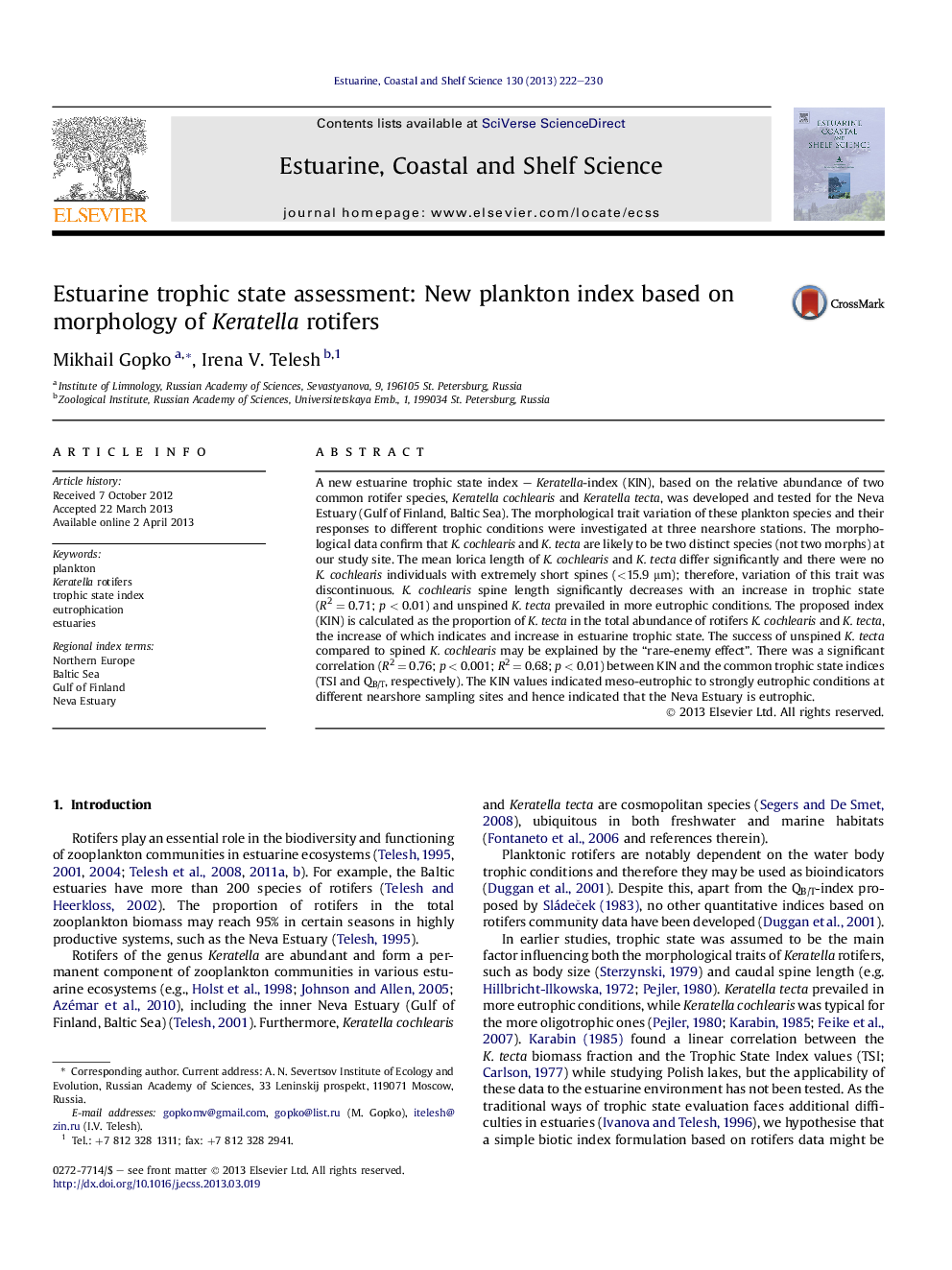| کد مقاله | کد نشریه | سال انتشار | مقاله انگلیسی | نسخه تمام متن |
|---|---|---|---|---|
| 4539835 | 1626666 | 2013 | 9 صفحه PDF | دانلود رایگان |

• A new trophic state Keratella-index (KIN) for estuarine environment is proposed.
• Plankton rotifers K. cochlearis and K. tecta indicate the estuarine trophic state.
• Environmental conditions influence morphology of the Keratella rotifers.
• Relative abundance of K. tecta positively correlates with estuarine trophic state.
• Trophic status of the Neva Estuary was estimated using the Keratella-index.
A new estuarine trophic state index – Keratella-index (KIN), based on the relative abundance of two common rotifer species, Keratella cochlearis and Keratella tecta, was developed and tested for the Neva Estuary (Gulf of Finland, Baltic Sea). The morphological trait variation of these plankton species and their responses to different trophic conditions were investigated at three nearshore stations. The morphological data confirm that K. cochlearis and K. tecta are likely to be two distinct species (not two morphs) at our study site. The mean lorica length of K. cochlearis and K. tecta differ significantly and there were no K. cochlearis individuals with extremely short spines (<15.9 μm); therefore, variation of this trait was discontinuous. K. cochlearis spine length significantly decreases with an increase in trophic state (R2 = 0.71; p < 0.01) and unspined K. tecta prevailed in more eutrophic conditions. The proposed index (KIN) is calculated as the proportion of K. tecta in the total abundance of rotifers K. cochlearis and K. tecta, the increase of which indicates and increase in estuarine trophic state. The success of unspined K. tecta compared to spined K. cochlearis may be explained by the “rare-enemy effect”. There was a significant correlation (R2 = 0.76; p < 0.001; R2 = 0.68; p < 0.01) between KIN and the common trophic state indices (TSI and QB/T, respectively). The KIN values indicated meso-eutrophic to strongly eutrophic conditions at different nearshore sampling sites and hence indicated that the Neva Estuary is eutrophic.
Journal: Estuarine, Coastal and Shelf Science - Volume 130, 20 September 2013, Pages 222–230